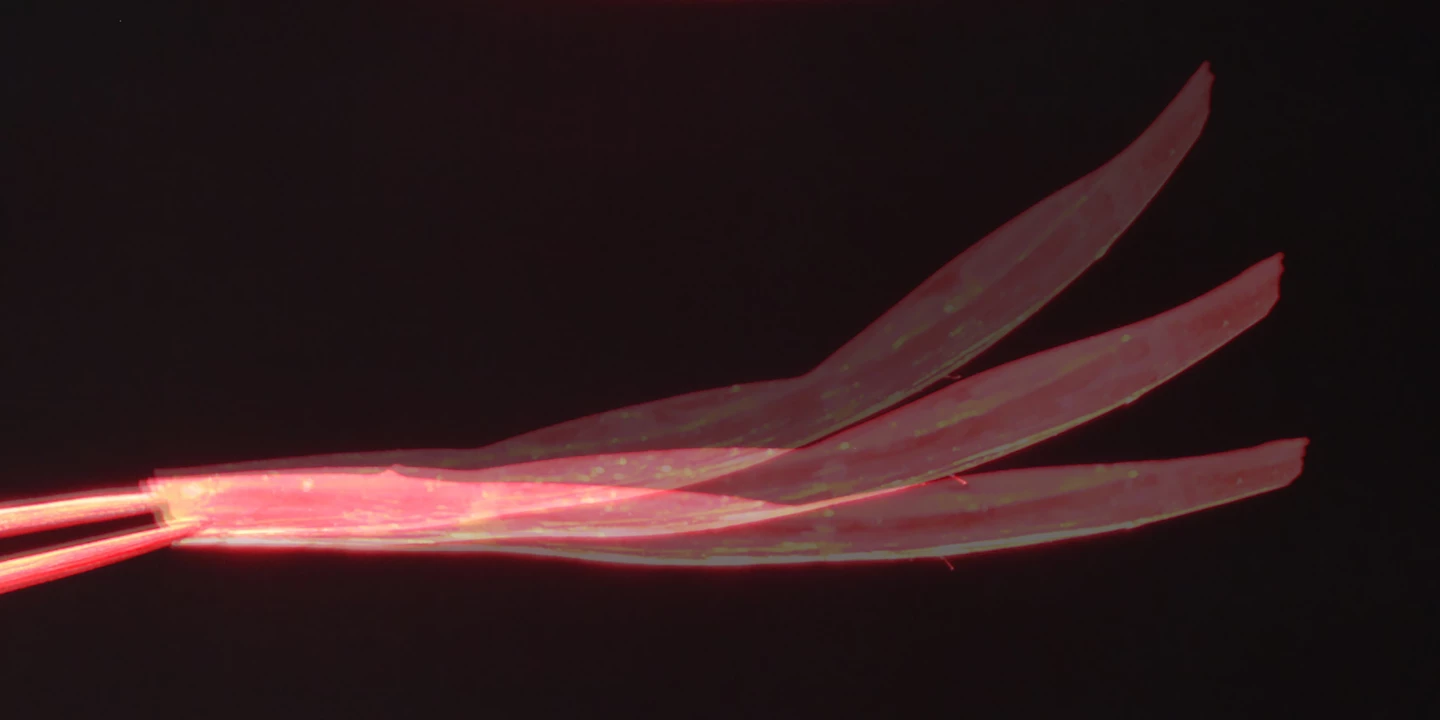It's possible that someday in the future, sunlight-powered robots may be able to swim across marine oil spills, soaking up the oil as they go. A tiny functioning prototype has already been created, and it was inspired by both the steam engine and an insect.
Currently in development at the University of California - Riverside, the "Neusbot" device is named after the neuston category of animals. One of those animals is the water strider, an insect which utilizes pulsating movements to scoot across the water's surface.
Presently measuring just 20 mm long by 5 mm wide, the robot's body takes the form of a flat, floating, three-layer film. The top layer is made of clear polyimide plastic, the middle layer is a porous hydrogel, and the bottom layer is a PDMS (polydimethylsiloxane) polymer.
Iron oxide and copper nanorods within the hydrogel convert light energy into heat, which vaporizes liquid water absorbed by the gel. The resulting steam forms a bubble in the gel, which exerts mechanical pressure and thermal energy on both the top and bottom layers of the film.
Because the polyimide (top layer) has a lower coefficient of thermal expansion than the PDMS (bottom layer), the film responds by bending upward. Once the bubble pops, the film flattens back out, but then bends again as the next bubble is formed. The Neusbot is thus able to move across the surface of the water by continuously oscillating.

We're told that it presently has a top speed of about 1.3 mm per second. In the current lab-based setup, where the light takes the form of a laser beam, the bot can be made to turn left or right by changing the angle of that beam.
Ultimately, it is hoped that much larger sunlight-powered Neusbots could be equipped with a fourth layer of oil-absorbing material. They could then be deployed on oil spills which they would move across on their own, after which they would be retrieved from the water.
"If sunlight is used for power, this machine is sustainable, and won’t require additional energy sources," says the lead scientist, Zhiwei Li. "The film is also reusable."
A paper on the research was recently published in the journal Science Robotics.





